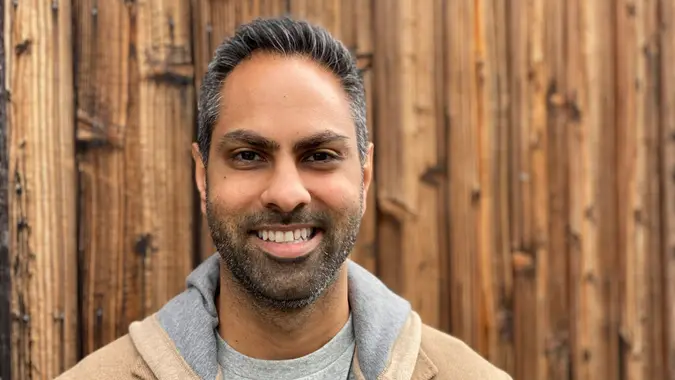Why Suze Orman Never Eats Out and Hates Setting Spending Limits

Commitment to Our Readers
GOBankingRates' editorial team is committed to bringing you unbiased reviews and information. We use data-driven methodologies to evaluate financial products and services - our reviews and ratings are not influenced by advertisers. You can read more about our editorial guidelines and our products and services review methodology.

20 Years
Helping You Live Richer

Reviewed
by Experts

Trusted by
Millions of Readers
Suze Orman is a leading financial adviser in America, as well as the author of over a dozen personal finance books and the host of the “Women & Money” podcast. She has an estimated net worth of $75 million.
In a recent article on The Wall Street Journal, Orman talked about her views on dining out and why she doesn’t set spending limits. Here’s what she said.
Also see her advice for saving yourself from financial disaster.
She’s Against Budgeting and Setting Spending Limits
Orman said she hates budgeting. In fact, she compared a budget to going on a restrictive diet.
“If you restrict, you limit, you cut back, you don’t buy this, you don’t buy that, and then all of a sudden you explode and you go out and you buy everything at once,” she said.
This can, understandably, have a highly undesirable effect on whatever it is you’re trying to achieve — whether that’s losing weight or saving money.
Similarly, Orman said she’s against setting New Year’s financial resolutions. In her mind, creating resolutions is another way of setting yourself up for failure.
Instead of New Year’s resolutions, Orman suggested asking yourself a simple question: “Do you feel powerful and secure?”
If the answer is no, then it’s probably better to find something that does make you feel secure instead of creating potentially difficult or impossible goals. This could be something as simple as saving $10 or not going out to eat. Whatever it is, the objective is to feel financially secure.
She Splurges on Some Things and Pinches Pennies on Others
Orman refuses to eat out, citing it as one of the biggest ways to waste money there is. Considering the fact that food-away-from-home (dining out) expenditures accounted for over half of all food costs in 2022, and costs continue to rise, this isn’t an exaggerated claim.
While Orman pinches pennies on things like dining out, she still splurges a little. One of her biggest splurges, she said, is “private air.” The only exception is when she and her partner go to Europe or places like that where the cost of private airfare is ridiculously high.
It’s Still Possible To Save Money — Even If It Doesn’t Seem Like It
With the cost of living so high in many parts of the country — and the world — many people feel it’s impossible to save money. Orman, however, disagreed.
According to her, one of the most important things is to live below your means without sacrificing your needs. This is a fine line, but an important one.
After publishing her book “The 9 Steps to Financial Freedom: Practical and Spiritual Steps So You Can Stop Worrying” in 1997, she used some of that money to purchase a $250,000 New York City apartment. Even though she could have afforded a $1 million or $2 million penthouse, she said she opted for a less expensive piece of real estate.
Why? Because it fit her needs and she didn’t see the point in spending more money than she had to on something she didn’t need.
Orman also said she and her partner, Kathy Travis, always discuss their financial decisions. One particular question they ask themselves whenever purchasing something is whether it’s a “want” or a “need.” For people trying to save money, she suggested doing the same thing for around three months. It could help.
Too Many Young People Ignore Compound Interest
According to Orman and many other financial experts, one area where young people go wrong is that they ignore — or don’t understand the value of — compound interest. And they don’t realize how much value they have in the sheer amount of time they have on their side.
Orman gave an example to illustrate the power of compounding interest. Say a 25-year-old puts $100 a month into an S&P 500 index fund through a Roth IRA every month until that person is 65 years old. That’s 40 years and 480 total contributions.
With an average 12% annual rate of return, that 25-year-old would have close to $1 million at age 65. Someone who waits until age 35 to do the same thing would have only around $300,000. That’s the power of compounding interest.
More From GOBankingRates
 Written by
Written by  Edited by
Edited by 
























